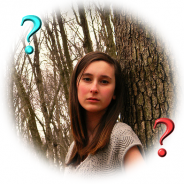
Bipolar disorder is the name used to describe some ‘mood swing’ conditions,the most severe type of which used to be called ‘manic depression’.
Bipolar disorder is a mental illness that’s characterized by extreme mood swings, that may be dangerous. A person suffering from bpd will experience episodes of abnormally elevated mood, clinically known as mania. They are also likely to experience depressive episodes. These episodes could happen separately, or together, inside a mixed episode where both emotions are experienced together. Bpd is also known as manic depression or manic despression symptoms. Very often, the disorder is viewed to develop during the late teen or early adulthood, with about half of all cases occurring prior to the age of 25.
Bipolar disorder
Bipolar disorder is the name used to describe some ‘mood swing’ conditions,the most severe type of which used to be called ‘manic depression’. The word describes the exaggerated swings of mood, cognition and from one extreme to the other which are characteristic of the illness.People with this illness suffer recurrent instances of high, or elevated moods (mania or hypomania) and depression. Most experience both highs and the lows. Occasionally people may go through a mixture of both highs and lows simultaneously, or switch during the day, giving a ‘mixed’ picture of symptoms. A really small percentage of sufferers of bpd only experience the ‘highs’. People with bpd experience normal moods among their mood swings.
Note there are Been Yourself
One sign which you may be suffering from a bpd is that you’re constantly excusing what you do in front of others. An accurate method to conduct a self-test is to record how often you say to others, “I haven’t felt like myself lately,” or some variation. This can be in reference to either emotional lows or highs, to want to tally both kinds of excuses.
Record Your Sleep Patterns
Grab a pencil and paper and record the number of hours of sleep you get every night. Take additional notes to document both periods of insomnia and periods in which you felt like you couldn’t get enough proper sleep. If you’re suffering from a bpd, you should be able to track distinct peaks and valleys inside your sleep patterns that correlate for your mood swings.

Bipolar Disorder Self-Test
Conduct a Self-Test for Risky Behavior
Record any activities or behaviors that carry an unusually high-risk to your safety. A manic phase of the bipolar disorder may cause you to engage in a number of behaviors that may seem out-of-character for you, for example carelessly spending large amounts of cash, driving unusually fast or participating in promiscuous sex.
Record Your Emotional Ups and downs
Once you start tracking and noticing cycles for your sleep patterns, write additional notes regarding your energy levels during these periods. For example, on days where you sleep hardly any, you will need to see if your energy levels were unusually high or marked by manic behavior for example excessive talking or starting large and ambitious projects. On days in which you sleep too much, you’ll need to record feelings of loneliness, depression, indifference or perhaps suicidal tendencies.
Ensure That you have Both Manic and Depressive Symptoms
Bipolar disorders are often misdiagnosed simply because manic episodes aren’t paired equally with depressive episodes. If you are experiencing feelings of guilt, sadness, loneliness or despair, you might be suffering from clinical depression, not a bpd. Conversely, if manic episodes go on for long periods of time, you may be suffering from another kind of personality disorder. Ensure that both kinds of symptoms are present before you discuss bipolar disorders having a healthcare professional.
